Giotto's Arena Chapel
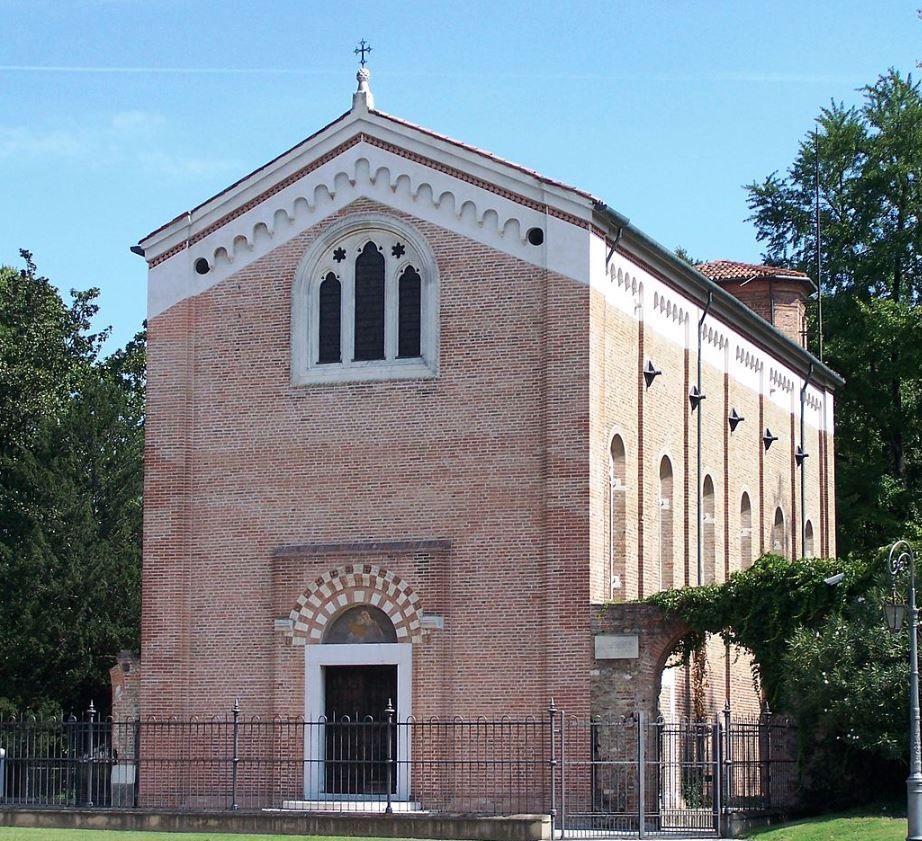
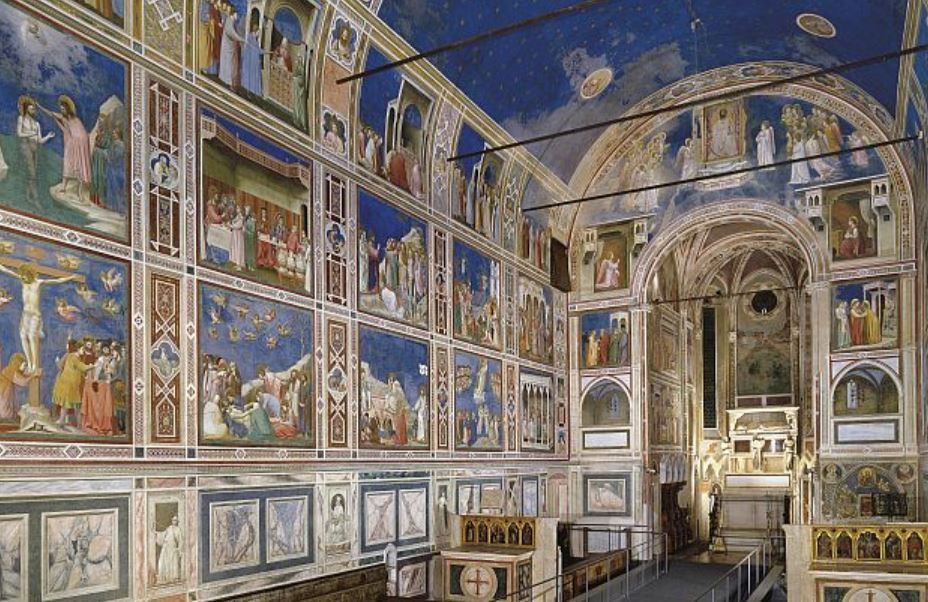
About 5 years ago I purchased a set of DVDs covering 48 x ½ hour lectures on A History of European Art from about 800AD (around the time of Charlemagne) up until WWII. I finally have the opportunity to watch these lectures and learn a little more about art.
One of the lectures covered Giotto’s Arena Chapel located in Padua, Italy which is filled with the most wonderful frescos and Giotto’s most celebrated work, completed around 1305. I was overwhelmed by its beauty and astounded I had never heard of it before. It is hard to believe a simple exterior holds such a rich interior (as shown above).
Giotto di Bondone (c.1267–January 8 1337), known as Giotto, was an Italian painter and architect from Florence. He is generally thought of as the first in a line of great artists of the Italian Renaissance.
Little is known of Giotto’s life however he is attributed with completing 28 frescoes in the Upper Church of the Basilica di San Francesco in Assisi (although some experts still dispute this claim) and a crucifix in the Church of Santa Maria Novella in Florence.
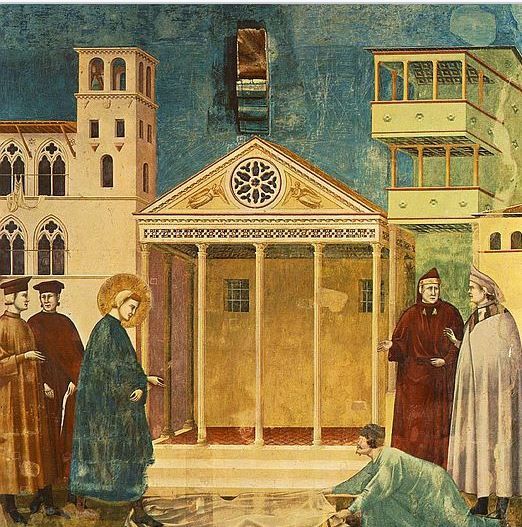
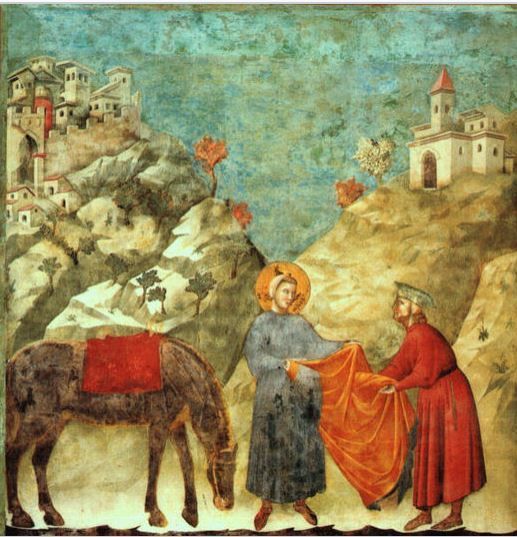
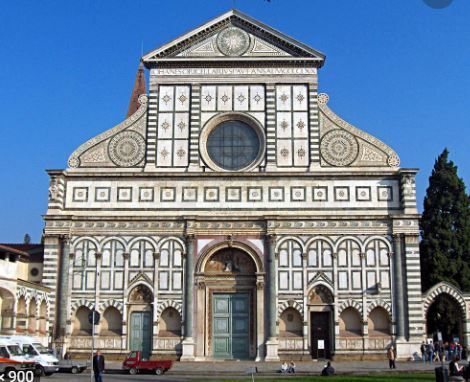
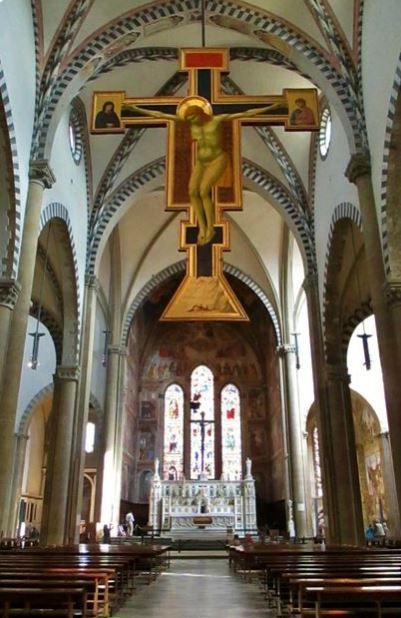
His most famous architectural achievement is the Bell Tower next to Cathedral Santa Maria del Fiore in Florence completed in 1304.
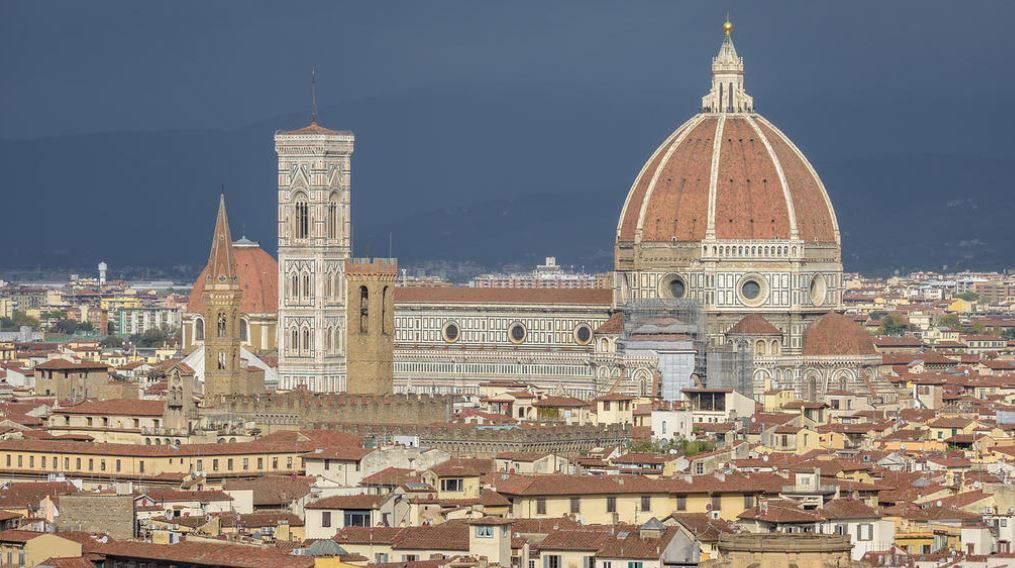
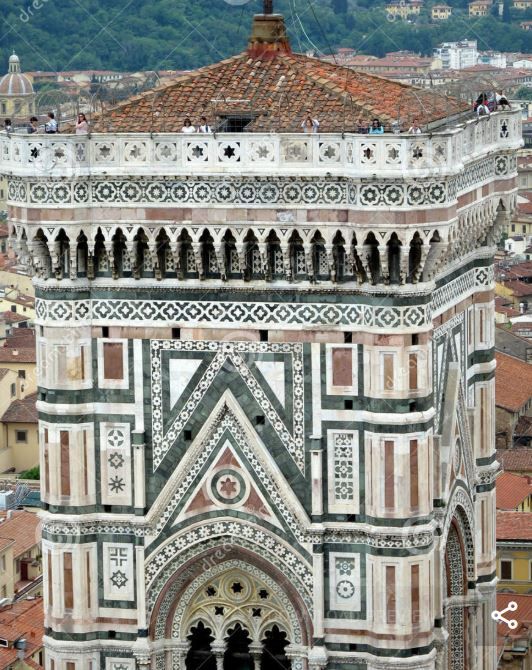
Giotto was commissioned by the Scrovegni family to paint the interior of the family chapel – known as the Arena Chapel because it was built, along with the palace for the family, on the site of an ancient Roman amphitheatre.
Enrico Scrovegni, like his father was an usurer (today they would be known as loan sharks); the family becoming rich on the exorbitant interest charged to even the poorest of people. At the time usury was deemed a sin by the church - Enrico commissioned this chapel to redeem the family reputation and perhaps their souls.
A Fresco cycle of 38 narrative scenes and a huge Last Judgement on the entrance wall of the chapel adorn the interior. The subjects include the life of the Virgin Mary and Jesus’ life, death and resurrection.
Fresco was the main medium for painting on walls during the Renaissance in Italy and for a long time thereafter; fresh in Italian, frescoes are painted with water-based colours onto a wet plaster wall, which means the completed work is infused with the wall. It also means the artist must complete the whole section of wet plaster in one day - speed and confidence is essential.
Expensive paints, like azure blue, were often applied to dry plaster - as less paint was needed, saving money, however the result does not stand the test of time – you will see this is obvious in some of the images – where the blue has deteriorated.
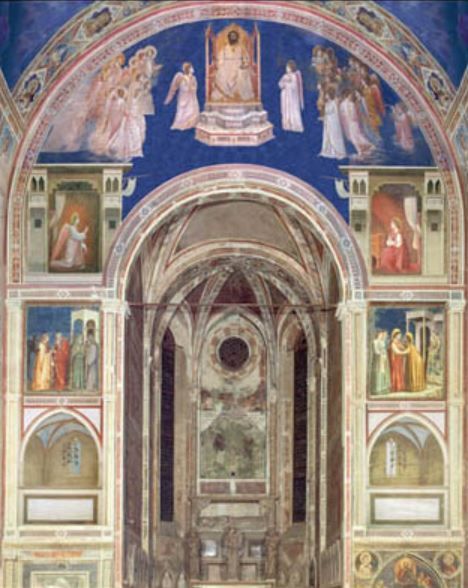
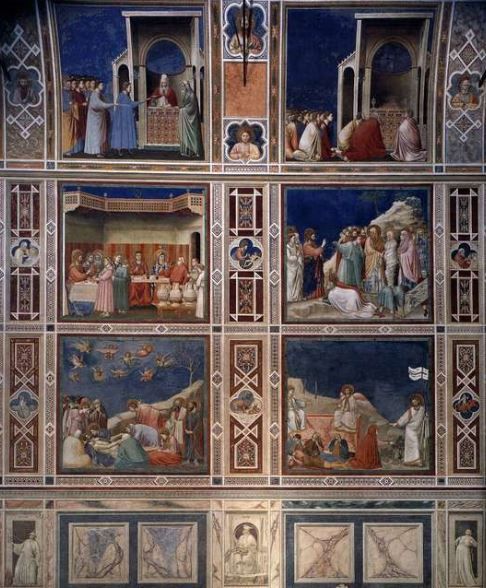
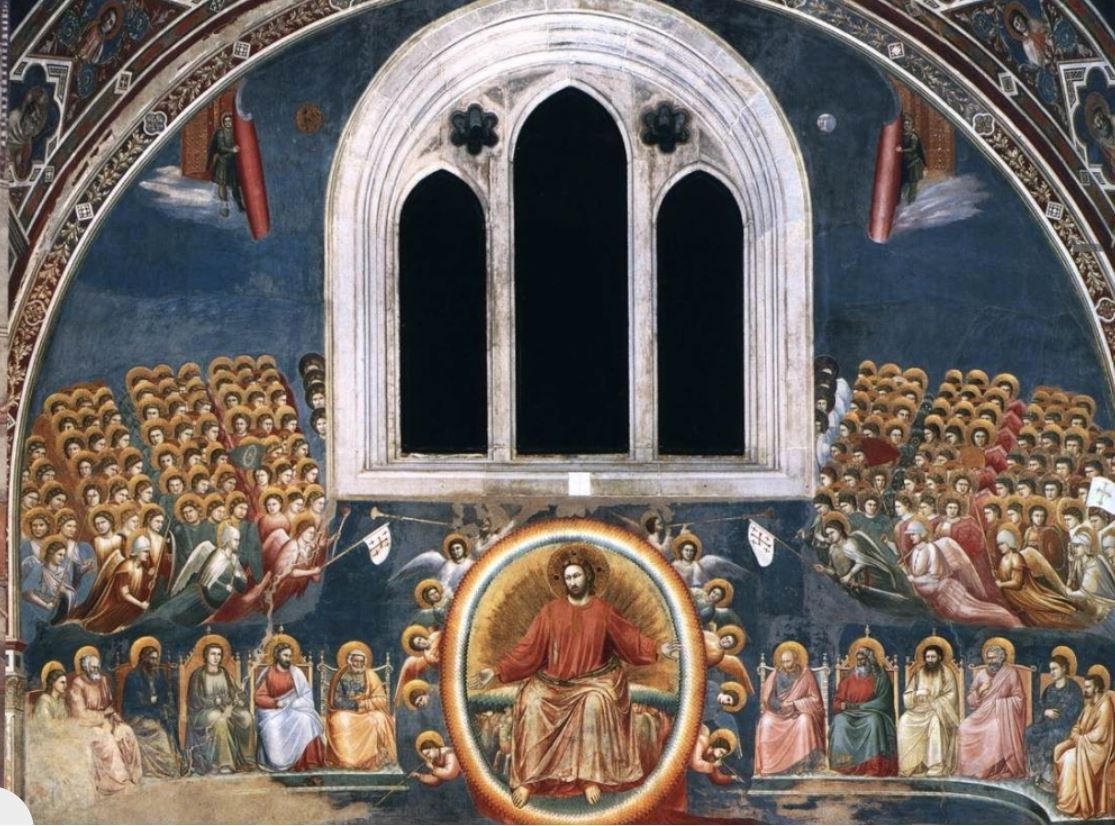
Above from left - the front of the Chapel displaying The Annunciation; 6 of the scenes along one of the walls. It should be noted the marble-like frames along the sides and bottom of each scene are all frescos. The rear wall of the Chapel displaying the Final Judgement.
In the 16th century, the biographer Giorgio Vasari said that Giotto changed painting from the Byzantine style of other artists of his day, and brought to life the great art of painting as it was made by the later Renaissance painters like Leonardo da Vinci. This was because Giotto drew his figures from life, rather than copying the style from old well-known pictures in the way that the Byzantine artists like Cimabue and Duccio did. (Credit:kids.kiddle.co)
Below is a close-up of the scene depicting the Deposition - which demonstrates the human quality of the figures - a sense of movement, three dimensionality and human emotions, telling a story, rather than a static 2 dimensional religious presentation.
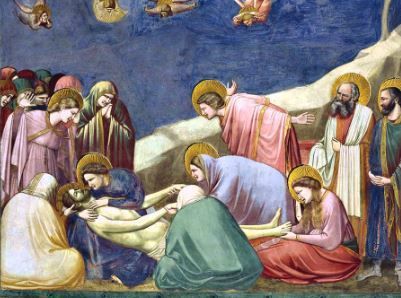
Words alone cannot describe the breathtaking beauty of the Arena Chapel and the visual stories presented in each scene. The 3 ½ min YouTube clip below takes you on a brief tour.
If you are intrigued and would like a more in-depth description of the scenes depicted in the Arena Chapel, then the link below provides further details and a series of 4 video clips - each about 5 mins.
https://courses.lumenlearning.com/zeliart102/chapter/giottos-arena-chapel/
Whichever one you chose I hope you are as thrilled and excited as I was to learn of this fabulous church and its frescos. Perhaps you have had the honour of visiting the Arena Chapel? Were you in awe of Giotto's work?
Details taken from - The Great Courses - A History of European Art - presented by Professor William Kloss, Independent Art Historian, The Smithsonian Associates, Smithsonian Institution.
